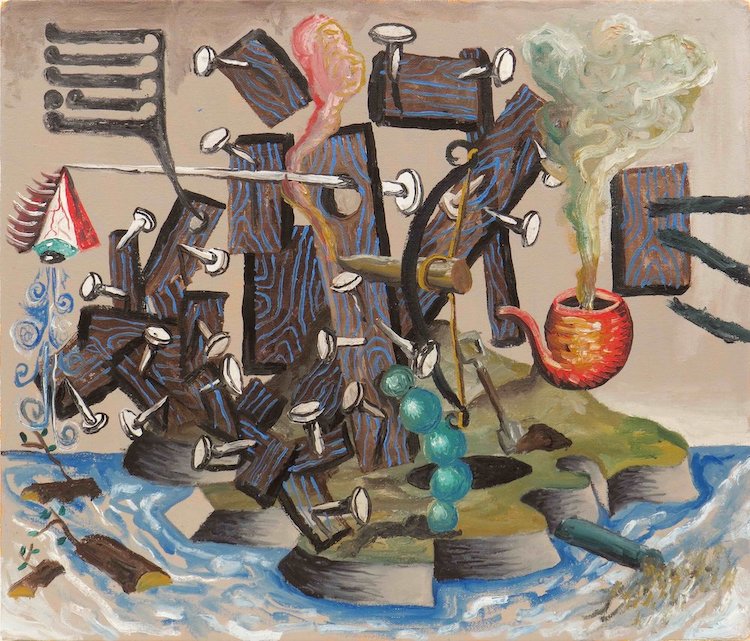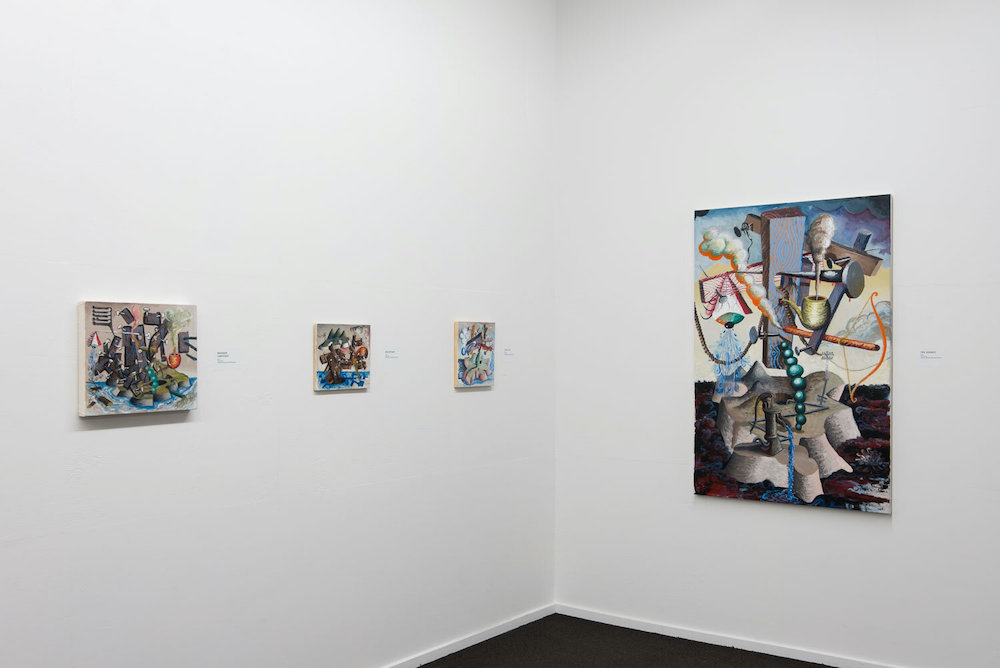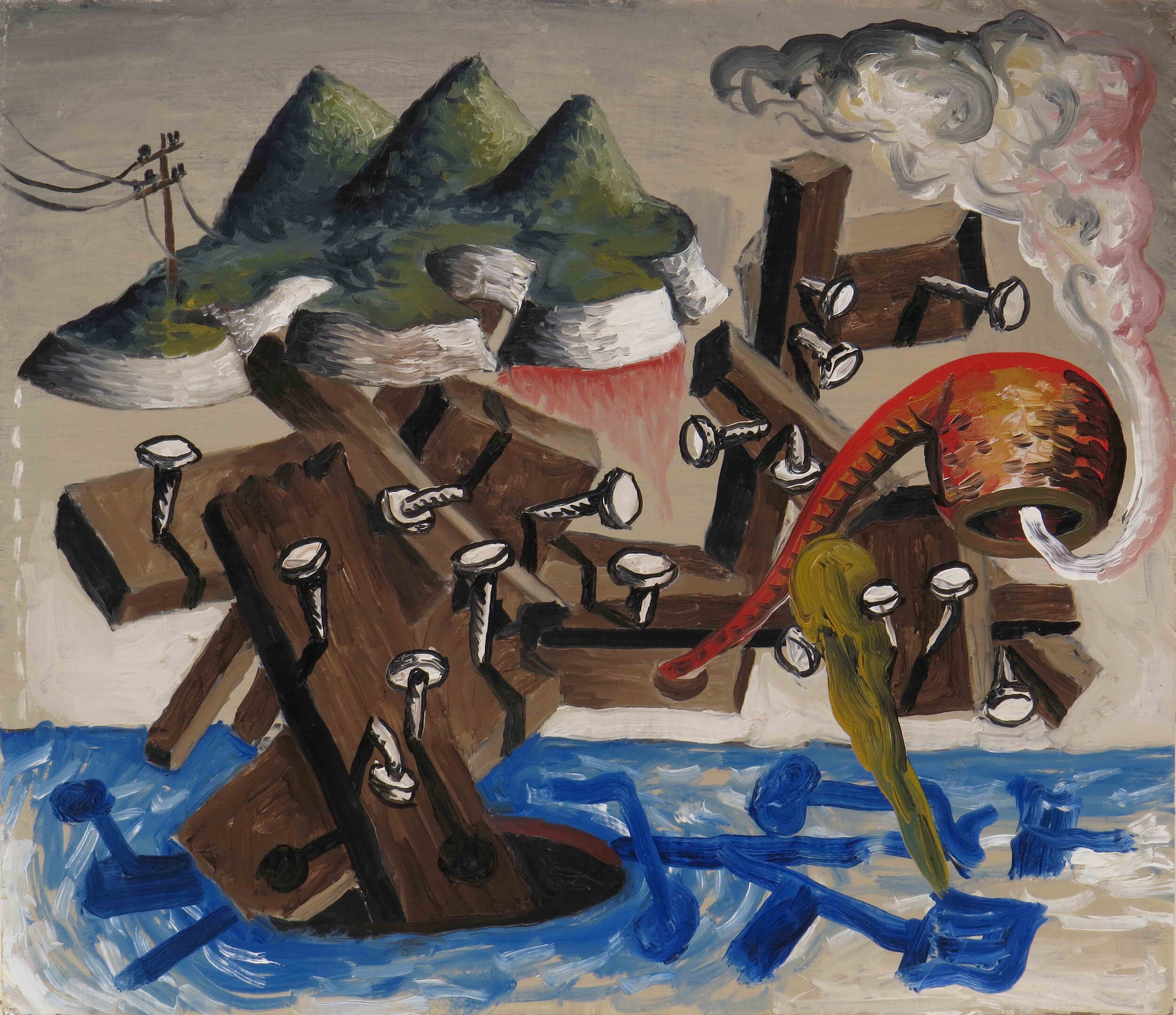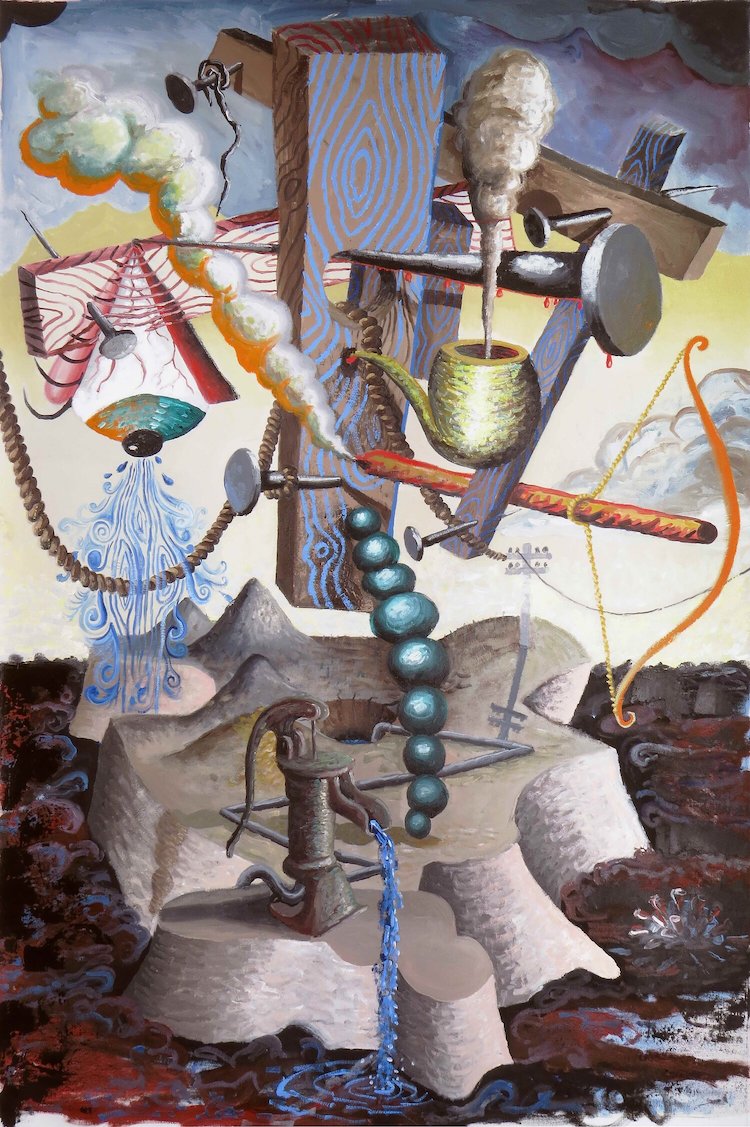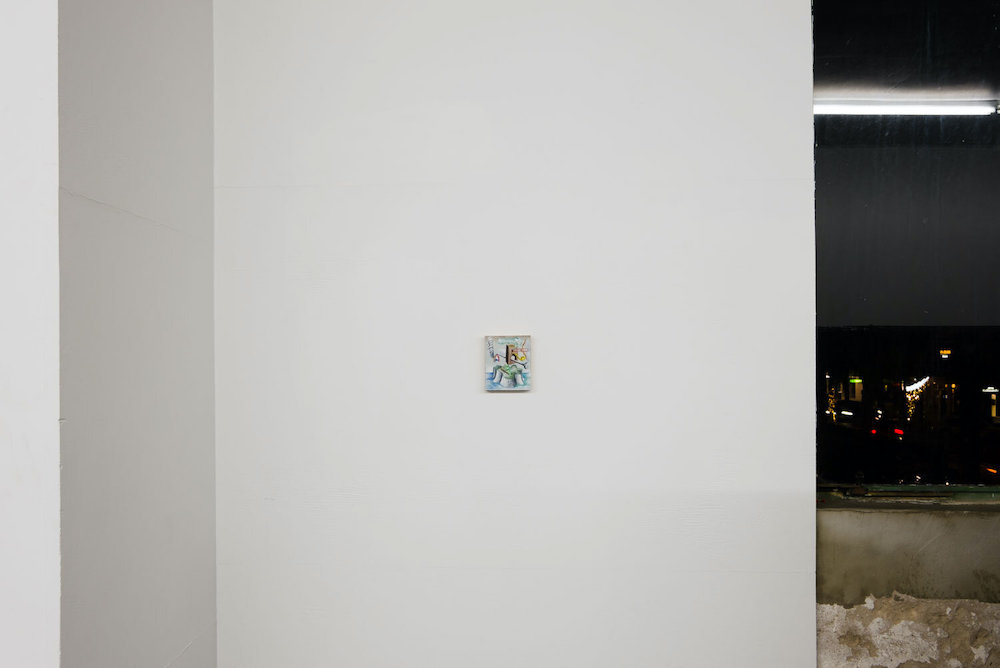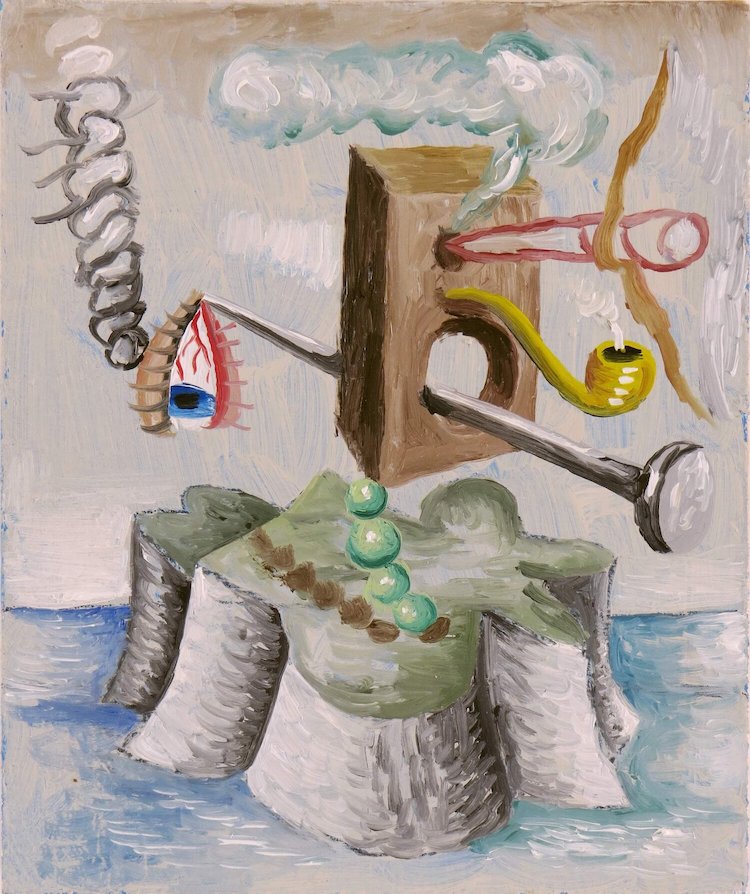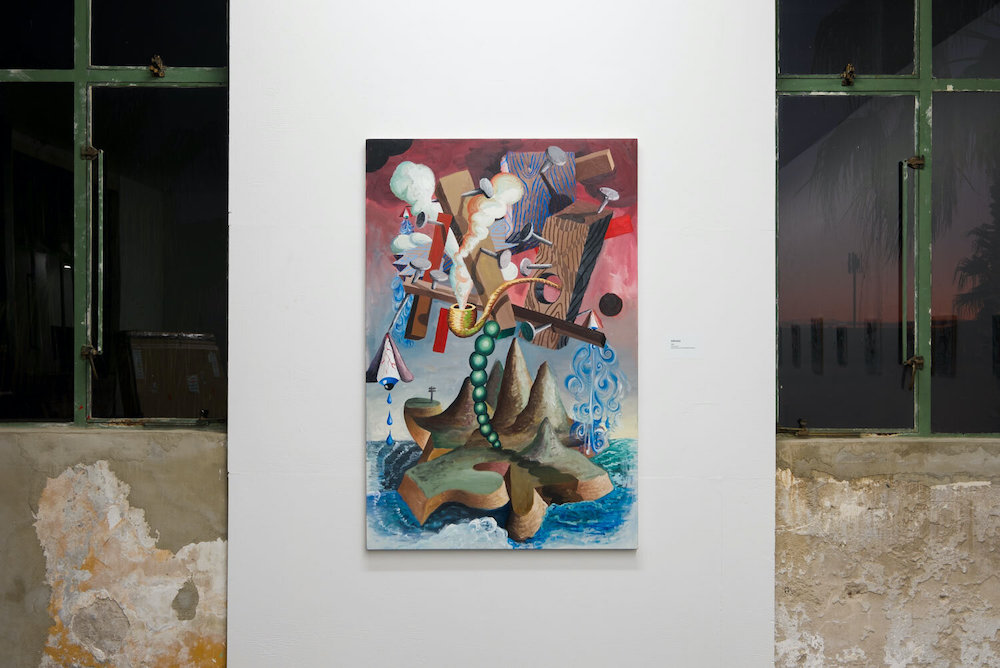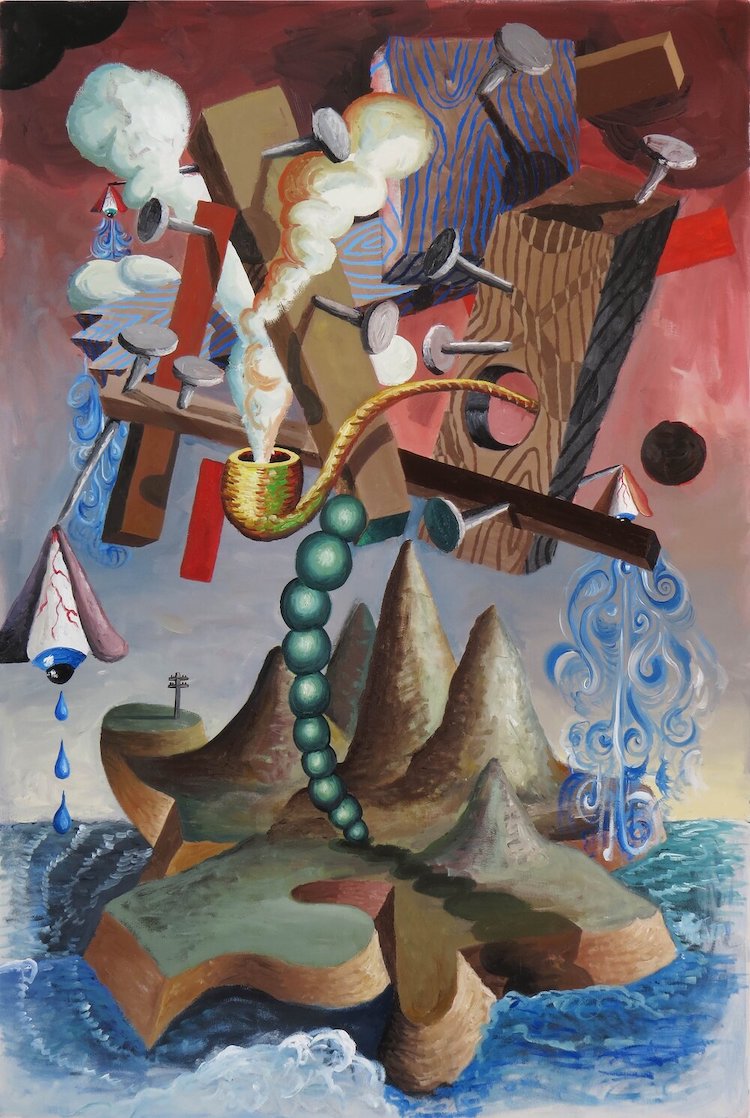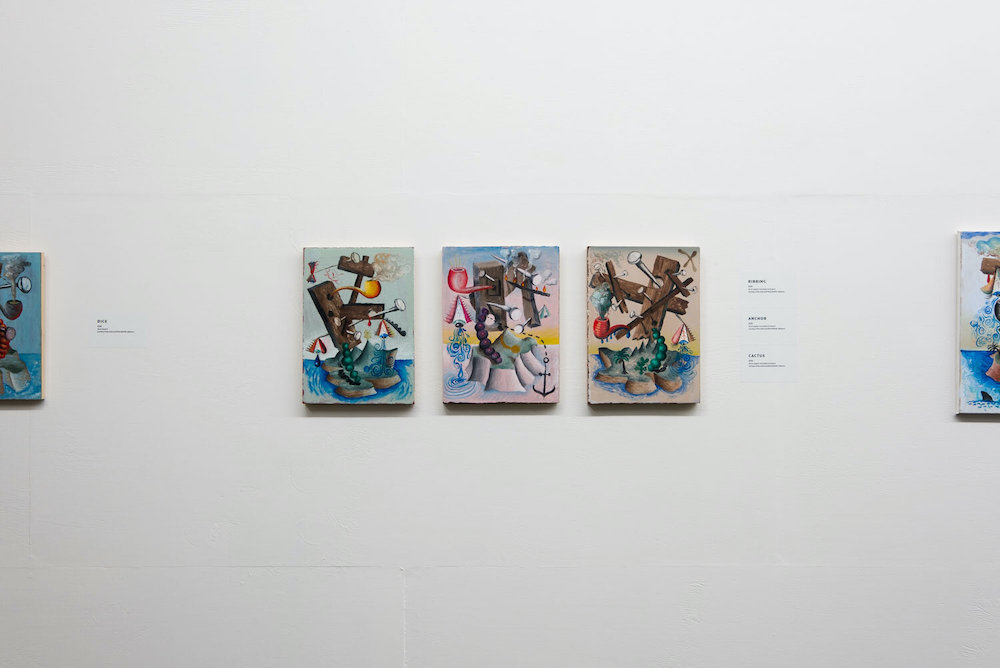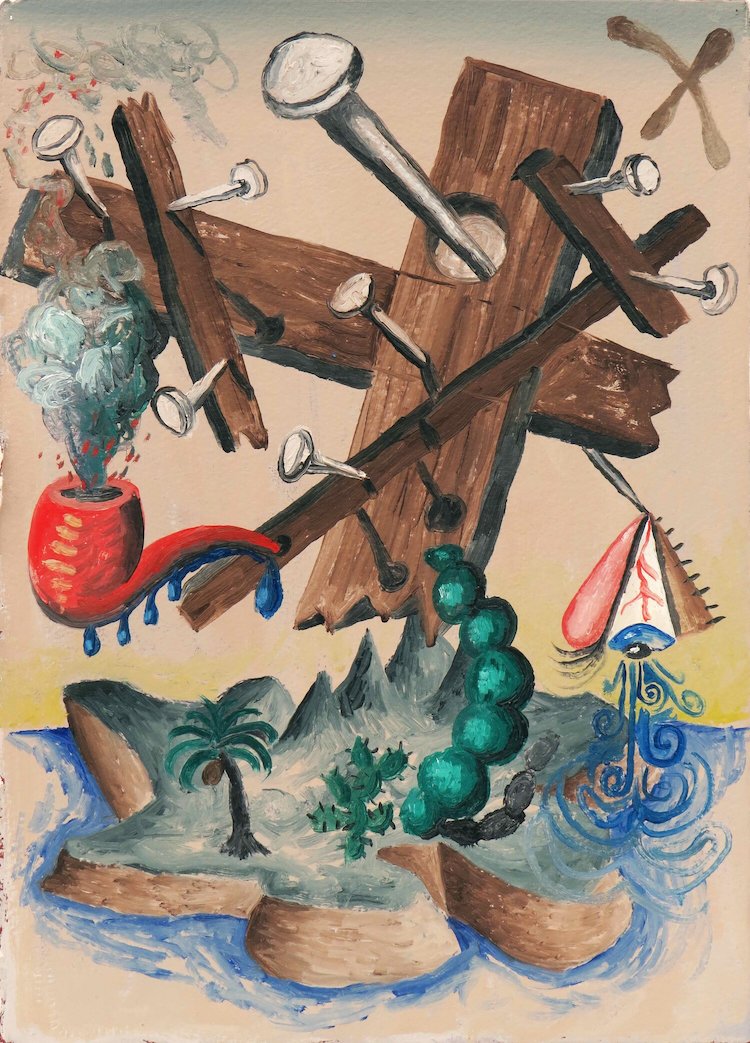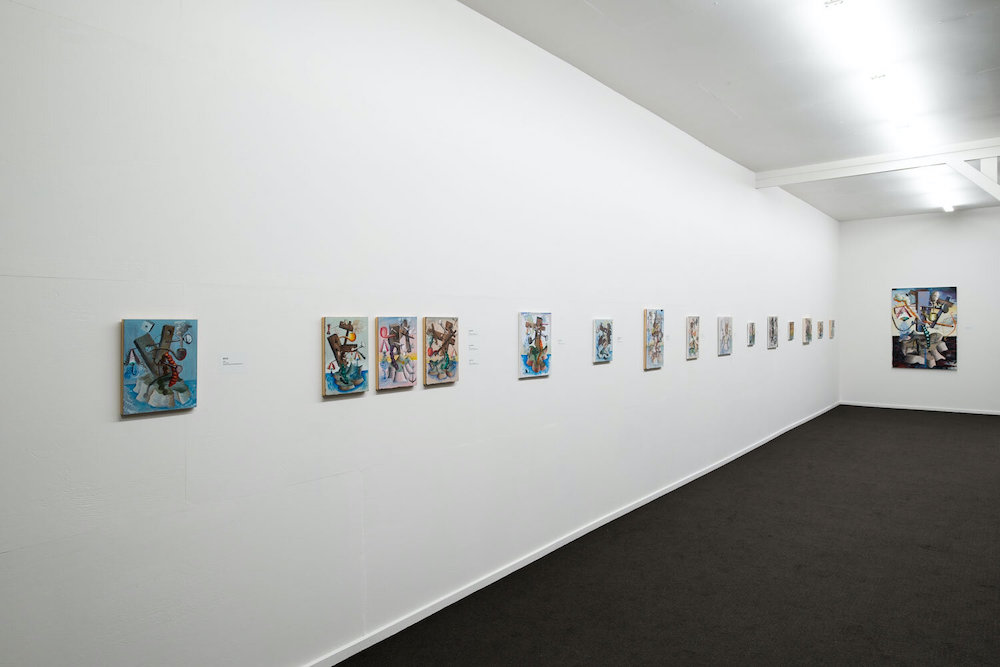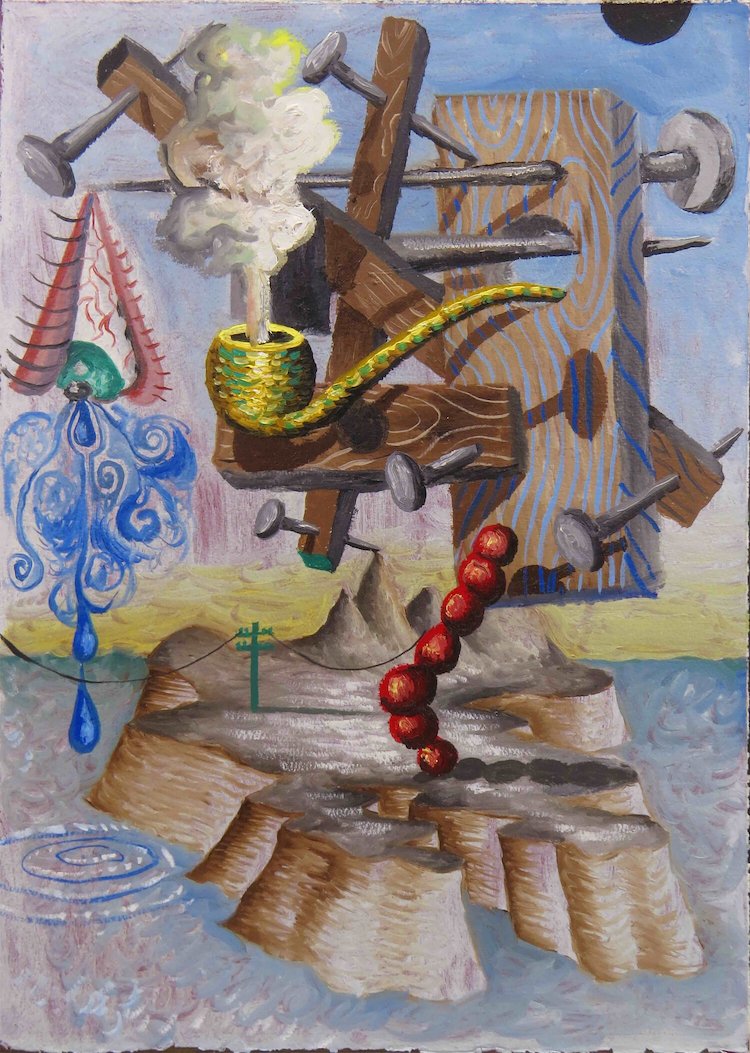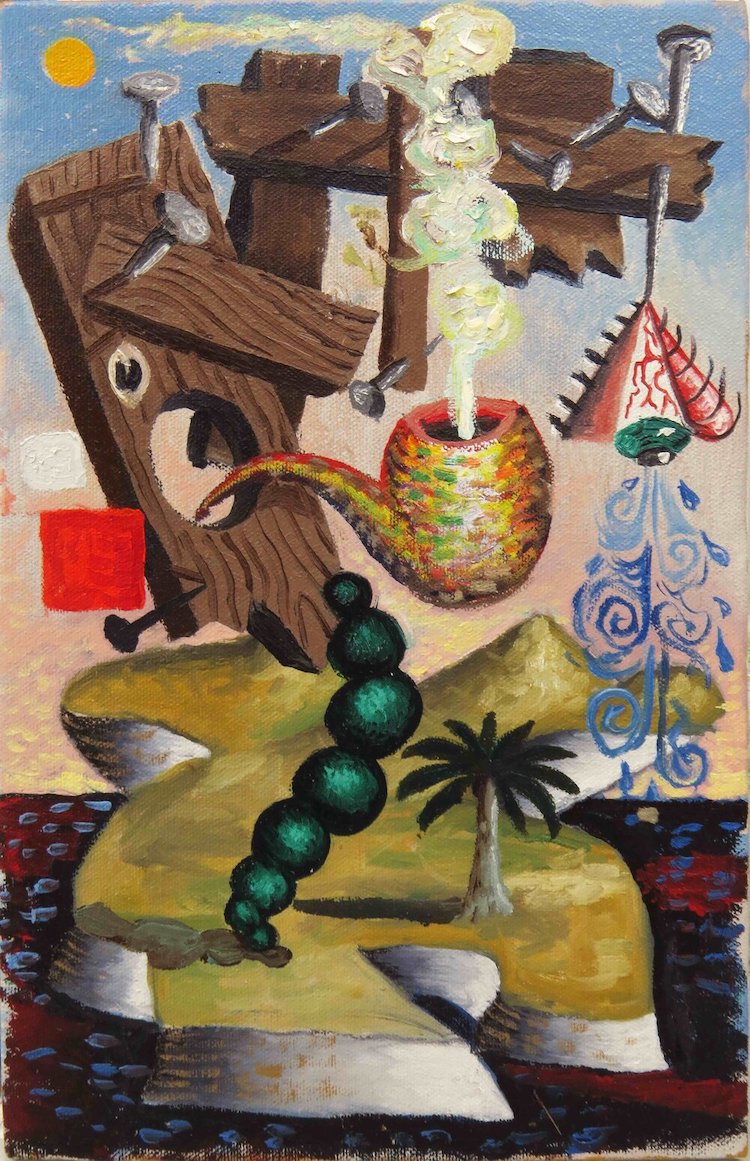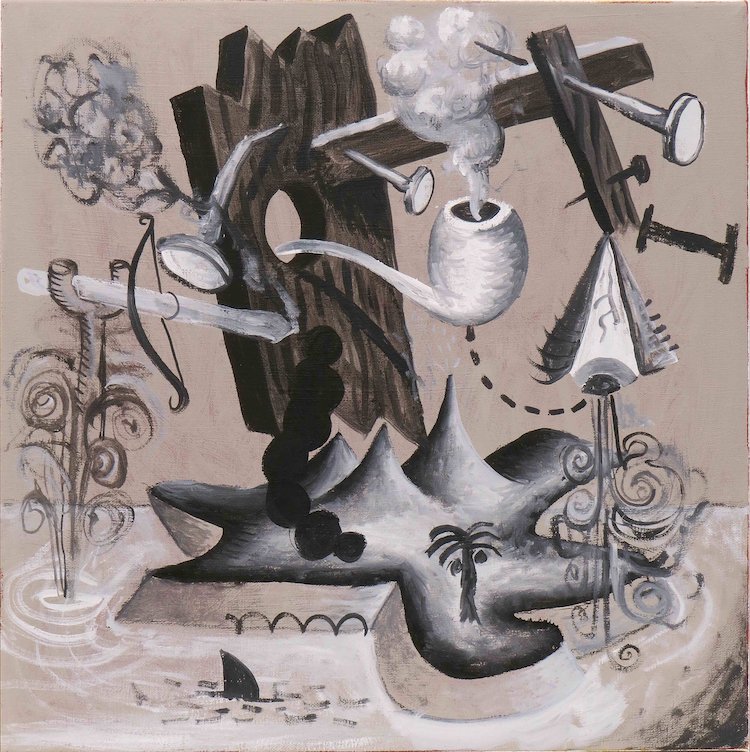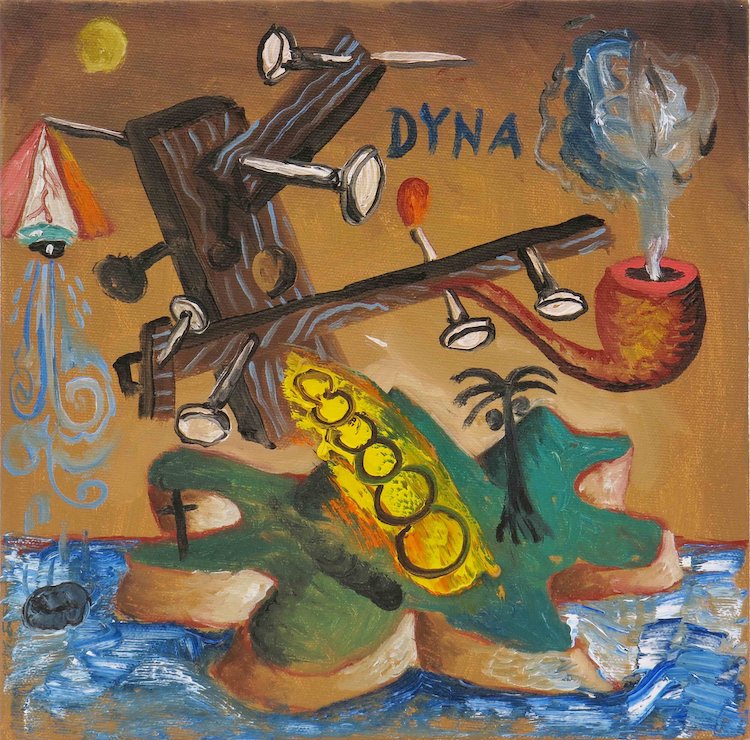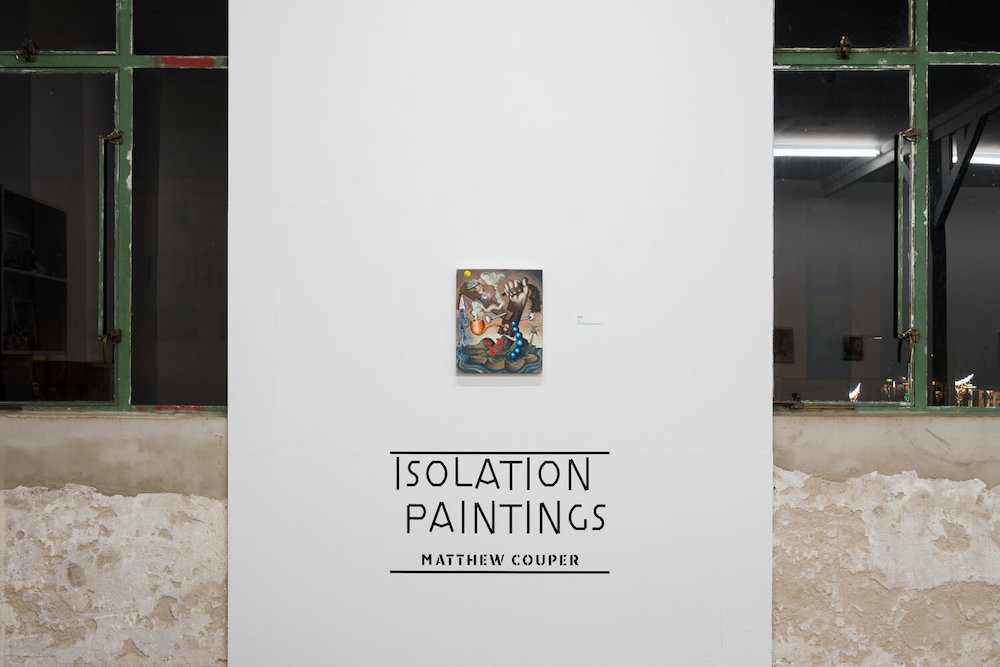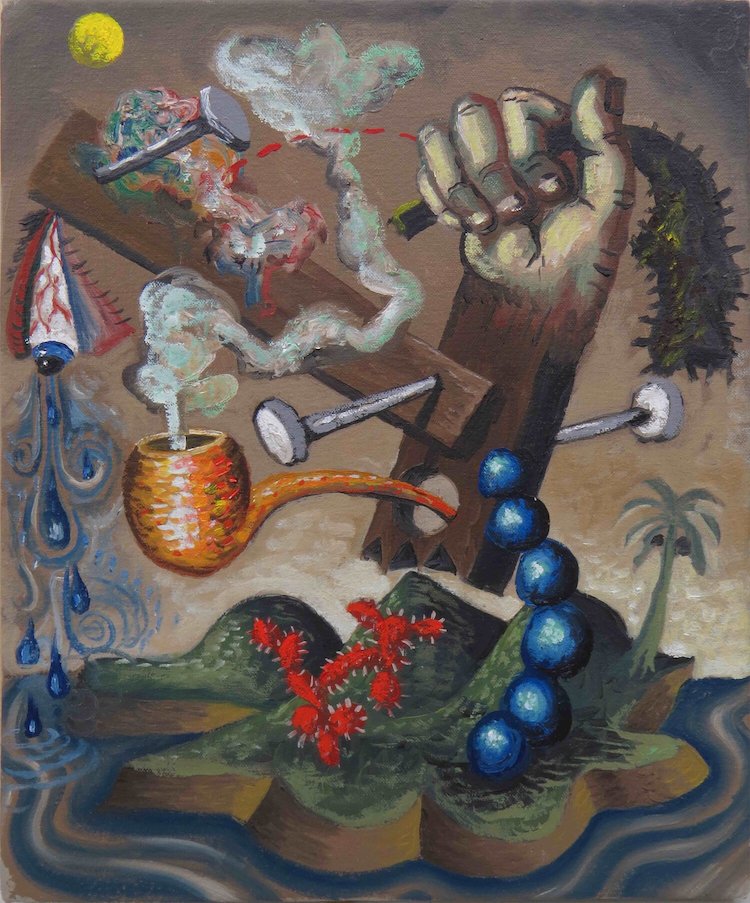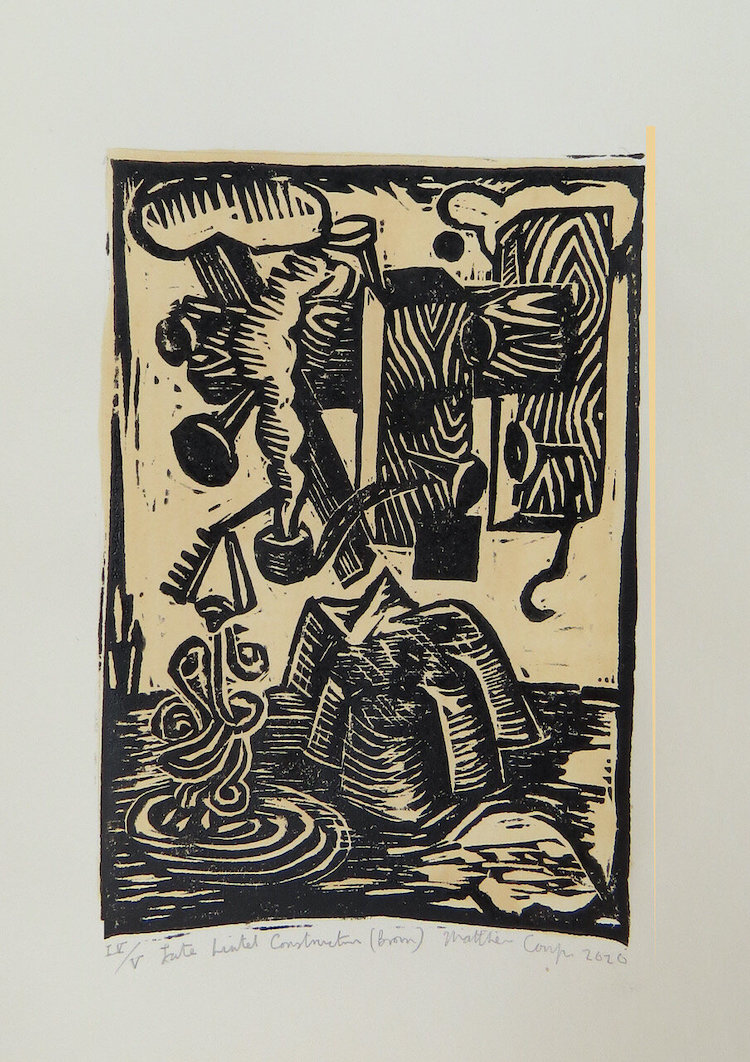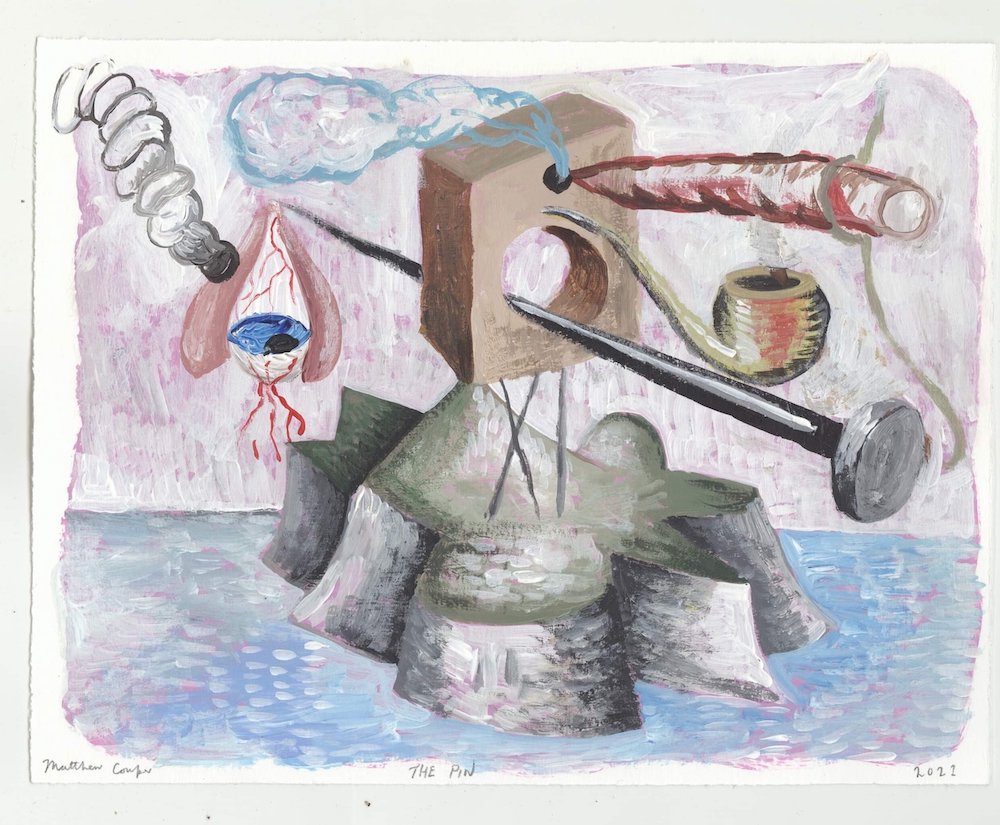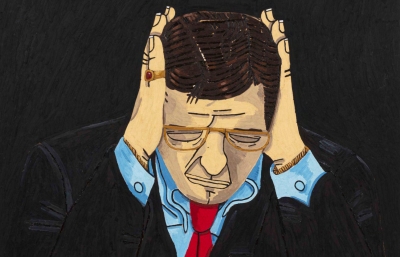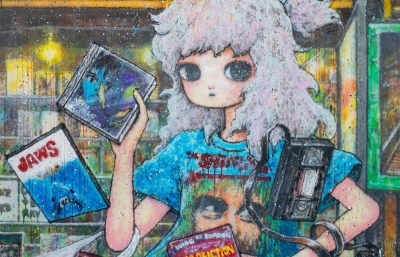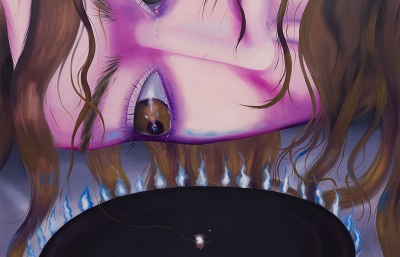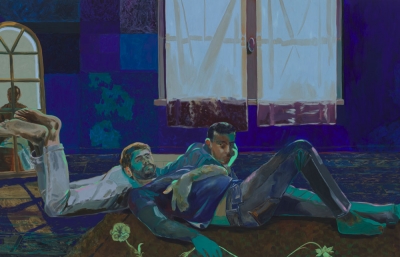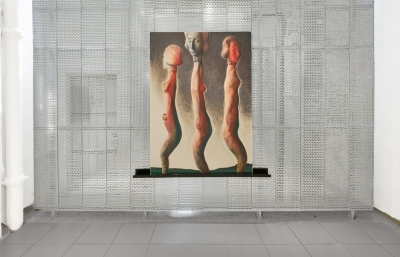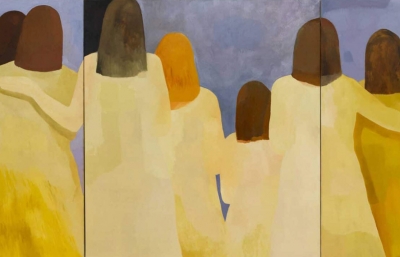Paul Nache Gallery in Gisborne, New Zealand, is currently running the final days of the extended solo exhibition by the local, now US-based artist, Matthew Couper. Isolation Paintings is a new series of work that closely relates to the artist's earlier work and more intuitive, expressive approach to painting, while talking about the subject of social isolation in a formally, more fun way.
After keeping an eye on Couper's work for some time now, we were excited to see this compact selection of assemblage-style visuals being presented in his homeland. Serving as a personal connection both with his home as well as with his formal years, these pieces were made after the artist came across his early work after not seeing them for a decade. To some extent done with the heavy subjects and more refined, detailed language he worked with up to that point, he felt reinvigorated by the immediacy and the looseness of the earlier approach. Intrigued by the plague of social isolation in the hyperconnected world, especially coming from a remote island himself, he has decided to tackle this one subject through a body of work that is based on repetition and pattern recognition.
Contrasting the global, pandemic-enforced trend of living life through technology instead in person, Couper's exploration of what social isolation might look like starts from an island in the middle of the ocean. From there he proceeds with building an allegorical assemblage of symbols that signify life - a shelter (wood planks and nails), tools (rope, bow and arrow, anchor), water, electricity, etc. Through such an iconographic approach to depicting the theme, the artist is constructing suggestive visuals in which he simultaneously confronts the evocative symbols as well as experiments with composition as well as paint manipulation. The recurring, animated image of a smoking pipe as a symbol of domesticity and relaxation is juxtaposed by the sharp peaks of the island, its sometimes threatening fauna (cacti),or the shark swimming in the ocean around it. Simultaneously, the repetition enables for technical exploration which can be noticed in the ways he approaches formal elements such as color and shapes, namely the ways that the pipe's shape or wood grains are rendered. These particular elements are essentially self-referential and are setting base for the much-needed freedom in both the construction and painting process. At the same time, they allow the multiplicity of readings while serving as nods to artist's personal heroes such as Malevich's Suprematism or Guston's iconography or even the Mexican folk art. Through this refreshed creative process, Couper is letting the melange of influences manifest on a canvas, attributed with new qualities that enable them to exist in a new, often unconventional or surreal context. —Sasha Bogojev



